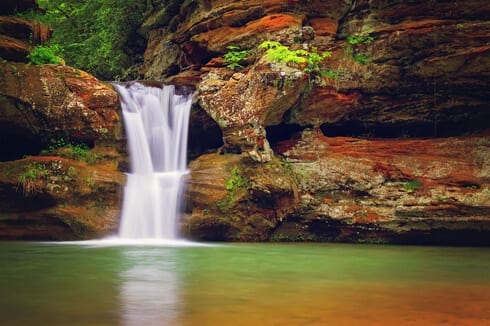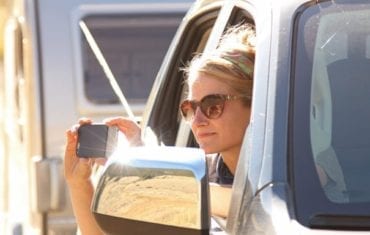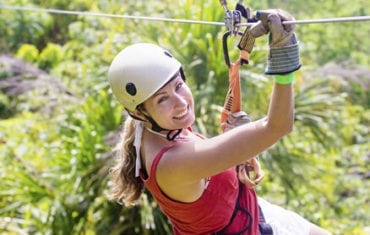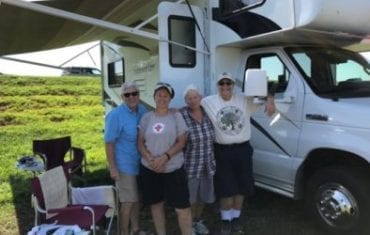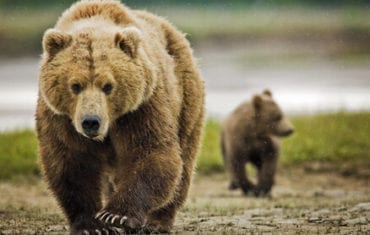There are thousands of campground options across America. But to us, they generally fall into one of four categories – resort, traditional, state and national, and remote. Here are descriptions of a few great campgrounds that fit those categories. If you are traveling to these areas, check them out!
A resort experience in the Black Hills
The open road beckons and you’re ready to get out and explore. All you have to do now is decide what kind of experience you’re looking for.
Resort-style camping is the outdoors at its most comfortable. You have all the amenities of a resort with the outdoor atmosphere you need to feed your soul.
Mount Rushmore Resort at Palmer Gulch in South Dakota is a great example of the camp resort. The site features everything — spots for tent camping and sites for trailer campers and RVs, six resort cabins with first-class amenities and 30 mountain cabins ranging from rustic to deluxe. It tops out with a 62-bedroom lodge that is perfect for group getaways and family reunions.
There is a great restaurant, pub, coffee and wine shop, snack bars and several stores for supplies, clothing and gifts. You can also ride a covered wagon to a mountain meadow for a fantastic chuck wagon dinner with all the fixings, including live music from cowboy performers.
A big part of the resort-style campground appeal is the activities offered. There should be enough to keep you and your family busy for days, if that’s what you want. For example, this sprawling resort, which includes a KOA campground, has a climbing wall, horseback riding, miniature golf course, water slides, splash pad, jumping pillow, swimming pools, bike and UTV rentals, live music, nightly movies and much more.
The resort even offers a shuttle service to take you up to Mount Rushmore, freeing you from fighting traffic and finding parking at the popular national memorial. Resort-style camping is about comfort and much of what you’ll find at these sites are services designed to make life on the road as easy as possible.
Traditional campgrounds offer great Sandusky stopovers
It’s time to plan your summer road trip and finding just the right place to lay your head is vital. A traditional campground gives you the perfect mix of services, activities and outdoor life.
The traditional campground caters to most campers, whether you need a place to pitch your tent or park your trailer or RV. You’ll find classic amenities like playgrounds, swimming pools, bathrooms and chow halls. But you’ll also have the stars over your head at nights and the wilds just over your shoulder in the morning.
Great examples of the traditional campground are found near Lake Erie at Ohio’s Sandusky KOA and Camp Sandusky, two spots that offer most everything you’ll need.
Sandusky KOA has an outdoor basketball court and a sand volleyball court, a swimming pool and a large jumping pillow that’s sort of like an inflated trampoline. The campground has camping sites for tents, trailers and RVs. But it also includes cabins, with kitchens, full showers and bathrooms, and rustic cabins, which have no running water.
Camp Sandusky is similar. You’ll find pools, a playground and a dining room that offers an all-you-can-eat pancake breakfast. Their camping sites include spots for tents, trailers and RVs. They also have a series of rustic, Amish-built cabins with electricity and AC but no running water.
Traditional campgrounds are designed to be a place you can set up camp and play or to be a home base you can leave to explore the environs outside the campsite.
State, national parks offer camping fun
America’s vast system of state and national parks makes getting out into nature as easy as checking into a KOA.
Camping at state and national parks will, by nature, be a more rustic experience than staying at a traditional or resort-style campground. But that’s their appeal. Still, it’s important to do some research to see what the specific park will allow and what amenities it offers.
Generally, this is what you’ll find. Most state parks accommodate traditional RVs and trailers, providing the basic hookups. You’ll find great spots to pitch a tent, fire pits and picnic tables. Many have pavilions and gathering areas for programs.
Hocking Hills State Park in Ohio is great example. The park is home to massive cliff formations, waterfalls and hemlock-shaded gorges, all accessible by trail. Back at camp, you have Wi-Fi hot spots, a lodge, swimming pool and rustic cabins.
Cuyahoga Valley National Park in Ohio features miles of trails and has a good mix of restaurants and lodges, and even a bed and breakfast, within the park. It has a number of camping sites for tents and offers day parking for RVs and large trailers but no overnight stays. Like many national parks, during the summer, rangers conduct nightly programs for campers that detail the history and nature of the park.
State and national park camping is a great for setting up that home base you can leave during the day to go explore the nature around you.
This camping may be remote, but not short on memories
Staying at backcountry and remote campgrounds at national parks can be some of the most memorable and breathtaking camping you do.
Most national parks offer primitive camping sites, spots that have no running water and electricity. These are the sites that tuck you down by a river or near the foot of a mountain, where you can pitch your tent and fall asleep miles from civilization. These spots are accessible by vehicle.
But if you want to take it one step further, many national parks also offer backcountry camping sites, spots that you reach after a day of hiking. Camping in national parks require fees and oftentimes reservations. Backcountry camping requires a permit.
Most parks maintain their backcountry camping sites. For example, at Yellowstone National Park sites include fire pits and poles from which you can hang food and gear to secure it from bears. Yellowstone’s network of trails and backcountry camping sites feature some of the greatest vistas in the country.
Backcountry permits have be obtained in person, usually from backcountry offices located in most ranger stations or visitor centers. And you’re required to specify the days you’ll be at the site. The permits then stay on you while you’re hiking and camping.
Websites for the national parks have great resources for campers, detailing what sites are available, what to pack and what to expect at primitive or backcountry site. It makes planning for a backcountry camping trick easy as making s’mores.

